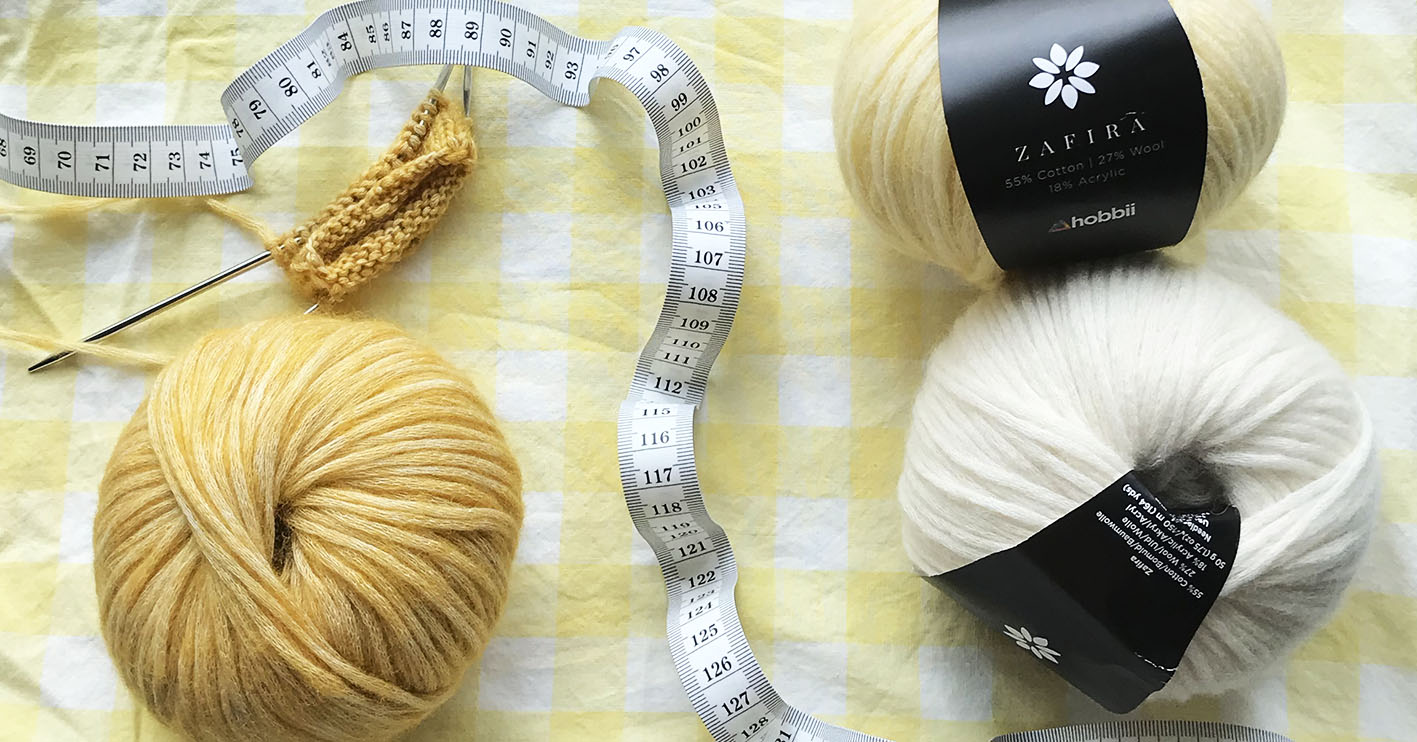Have you ever encountered a knitting pattern you really wanted to try with a different yarn? Here is a method on how to calculate the amount of yarn you’ll need if you want to knit with a different yarn than originally described in the pattern.

You just found some amazing yarn that even matches the knitting tension of the pattern you want to knit.
But… here’s the problem.
The yarn you’ve fallen in love with has a completely different running length and weight than the original yarn in the pattern 😰
The question now is: How much of the alternative yarn will you need to make sure you have enough to make the pattern?
You can actually learn how to calculate it yourself!
The math may be a little confusing at first, but when you finally get the hang of it it’s easy as pie.
We’ve divided the equation into three steps to help you keep track of the process: p>
1. First, you need to calculate how many skeins of the original yarn you would need to make the pattern in the desired size:
If you, e.g., need 400 g (approx. 14 oz) of yarn with a weight of 50 g (approx. 1.8 oz) per skein, you would calculate it like so:
400 : 50 = 8 skeins
(i.e. The amount of yarn needed for your size according to the pattern : the number of grams per skein from the original yarn = the number of skeins you would need in the original yarn)
2. Now you need to figure out how many meters the calculated amount of skeins of the original yarn have, using the running length of the original yarn:
If you need 8 skeins to knit the pattern in your desired size, and the original yarn has a running length of 212 meters (approx. 231 yd 2.5 ft) per 50 grams (1.8 oz), the math would look like this:
8 * 212 = 1696 meters
(i.e. The number of skeins you need to knit your desired size * the running length of the original yarn = the number of meters you need to make your desired size)
3. Now you just need to figure out how many skeins you need of your alternative yarn:
The alternative yarn you want to use may have a running length of, e.g., 175 meters (approx. 191 yd 1.1 ft). To hit the 1969 meters from the original yarn, you would calculate it like this:
1696 : 175 = 9,6 skeins (=10 skeins, since you always round up to the closest whole skein)
(i.e. The running length of the original yarn : the running length of the alternative yarn = the number of skeins you need in the alternative yarn)
Short version: 1. Grams of yarn for pattern : original yarn weight = number of skeins original yarn 2. Number of skeins original yarn * running length in meters original yarn = meters you need in the new yarn 3. Running length in meters original yarn : running length in meters new yarn = number of skeins you need in the new/alternative yarn Example: 1. 400 grams : 50 grams = 8 skeins 2. 8 skeins * 212 meters = 1696 meters 3. 1696 meters : 175 meters = 9,6 skeins (round up to 10) This means you need 2 more skeins of the alternative yarn than the number needed for the original pattern. |
REMEMBER: You cannot replace the original yarn with just any yarn. The structure and the fibers need to be somewhat similar in the alternative yarn if you want to make sure that you get the same results as in the original pattern.
Example: If a pattern is knit, e.g. using cotton, you can’t replace it with mohair or just any type of wool. It’ll probably make the sweater too big and way too elastic since cotton fibers have a tighter structure
Don’t be fooled by yarns with the same running length and weight
Even though two yarns may look similar in appearance, running length, and weight, they can still be very different.
You may encounter, e.g., two almost identical types of yarn with the same fibers that both weigh 50 grams and have a running length of 212 meters.
In this case, it’s important to look at the needle size indicated for the yarn. One yarn may be spun tighter and intended for 4 mm (US 6), while the other is airier and better suited for a 7 mm needle (US 10.5/11).
If you use the same amount of yarn in these two cases, you’ll probably end up a couple of skeins too short in the yarn intended for a 7 mm needle (US 10.5/11).
So, remember to always check that the recommended needle size is similar to the knitting tension indicated in the pattern.
Have any questions about the math, or do you have some great tips on calculating the amount of yarn needed? Then write a comment below 👇🏻



Leave a comment